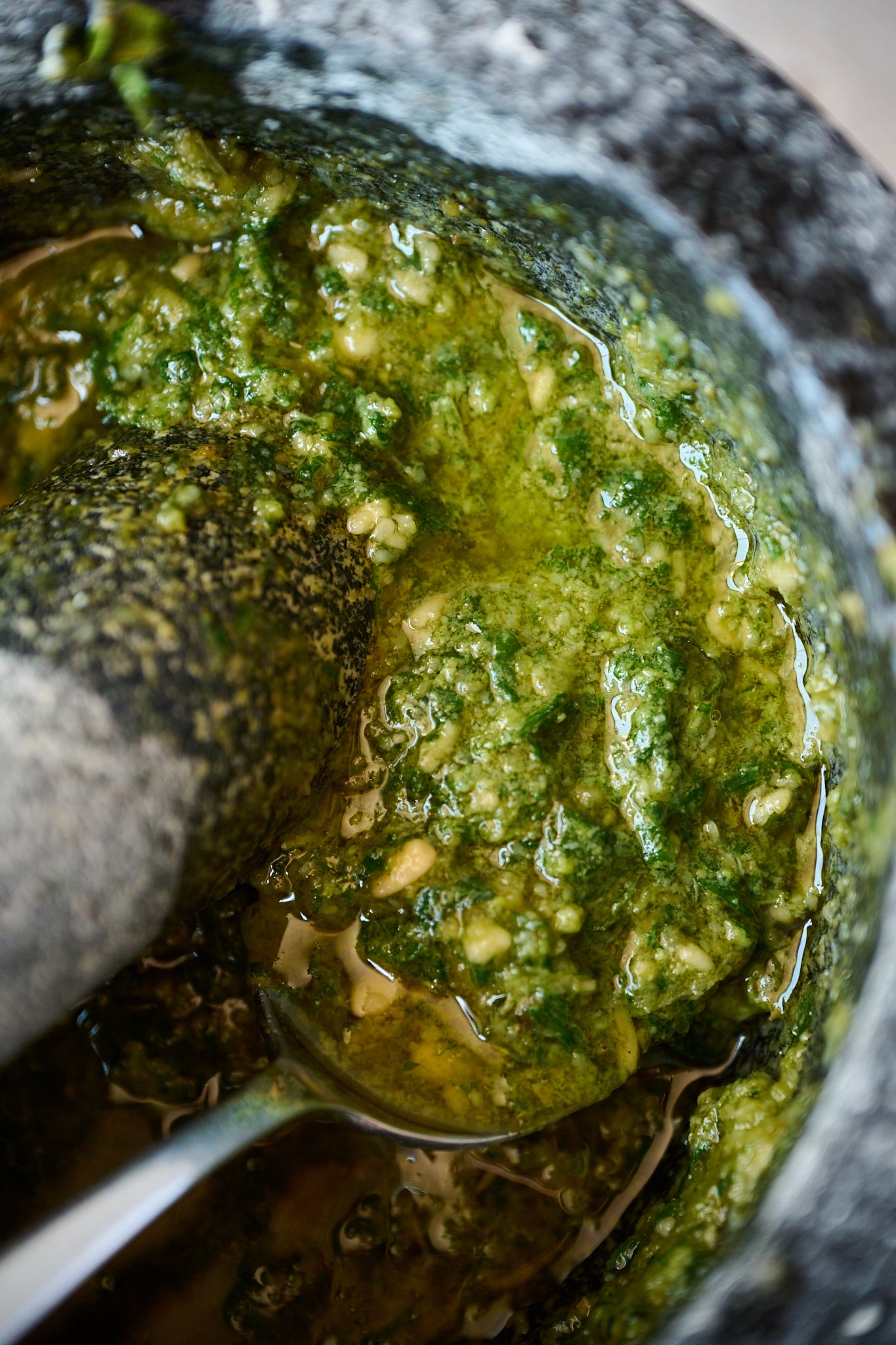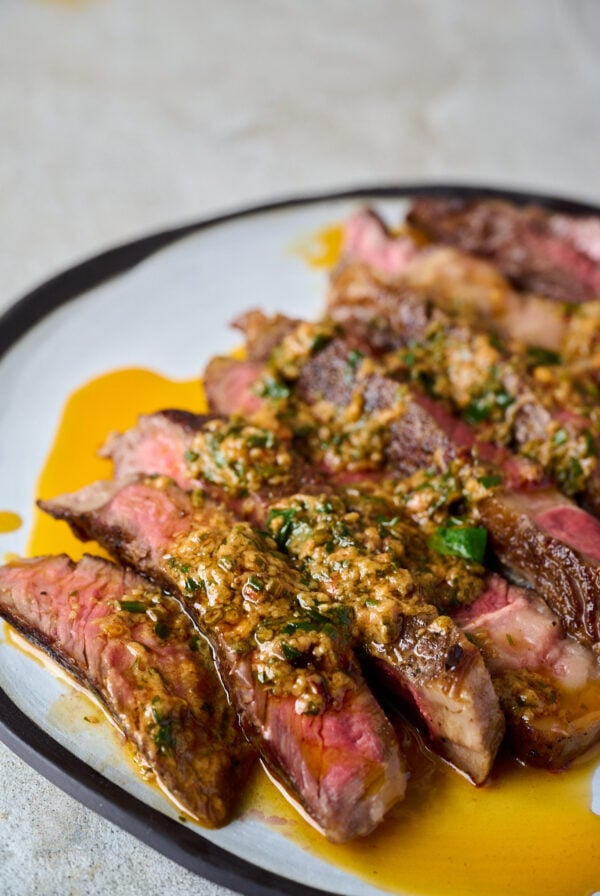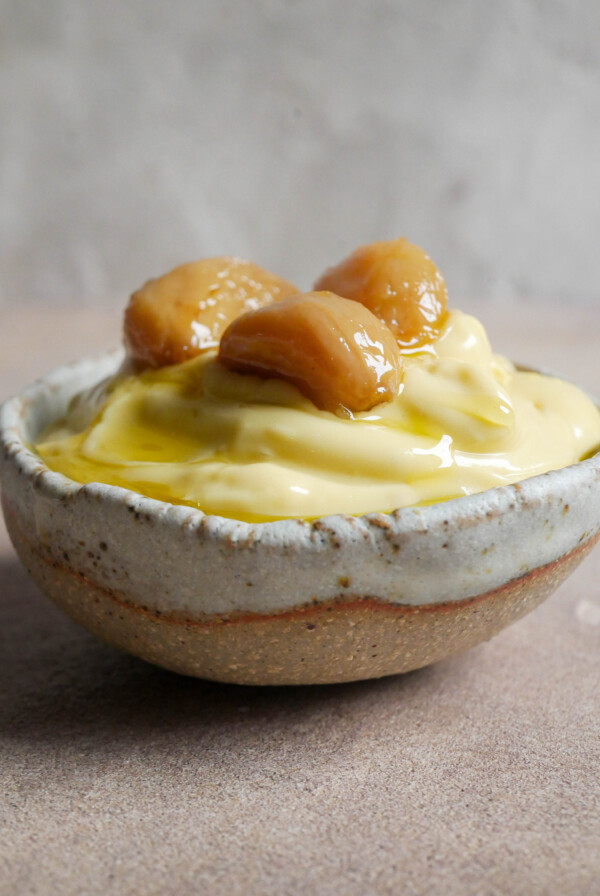Authentic Mortar & Pestle Pesto
Mar 22, 2025
Jump to RecipeThis post may contain affiliate links. Please see our disclosure policy.
If you’ve never made pesto by hand, you’re in for a treat. This Authentic Mortar & Pestle Pesto recipe captures the soul of traditional Genovese cooking — fresh, vibrant, and deeply flavorful. Using a mortar and pestle instead of a food processor creates a rustic texture and releases the full aroma of the ingredients. It’s an old-world technique that’s absolutely worth the effort.
Love pesto? Try it out in this vibrant and summery tomato tart, no cook tomato pasta that is drizzled with fresh pesto or delicious chicken parmesan focaccia sandwich.

There’s something deeply satisfying about slowing down and letting simple ingredients shine. Authentic Mortar & Pestle Pesto is a classic Italian recipe from Genoa that does just that. Made with fresh basil, garlic, pine nuts, cheese, and olive oil, its magic lies in the traditional method.
Using a mortar and pestle gently releases the flavors and oils, creating a pesto that’s creamier, more aromatic, and full of character — far beyond what a blender can do.
While perfect on freshly cooked pasta, it’s also delicious drizzled over a summer pasta salad, spread on a homemade focaccia sandwich, spooned over a salami and burrata pizza, or used to fry some eggs. Once you try it this way, there’s no going back.
Why You’ll Love This Recipe
- Versatile & Impressive – Whether tossed with pasta, spread on bread, or drizzled over veggies or grilled meats, this pesto elevates any dish with minimal effort.
- Unmatched Flavor & Texture – The mortar and pestle method draws out deeper, more aromatic flavors and gives the pesto a rich, rustic texture you just can’t get from a blender.
- Simple, Honest Ingredients – With just basil, garlic, nuts, cheese, and olive oil, this recipe celebrates fresh, whole ingredients in the most delicious way.
Ingredients
Use the best-quality ingredients you can get your hands on — freshness makes all the difference in a dish this simple, and sticking to the traditional ones is key to capturing true Genovese flavor.

- Fresh Basil – Sweet, aromatic Genovese basil is ideal. Smaller leaves are more tender and less bitter, perfect for that signature bright green color and delicate flavor.
- Pine Nuts – Traditionally used in Italian pesto, they add a subtle nuttiness and creamy texture. Lightly toasting them is optional but enhances their depth.
- Parmigiano-Reggiano & Pecorino Romano – This duo brings balance: Parmigiano offers a mellow, nutty richness, while Pecorino adds sharpness and a salty kick that rounds everything out.
How to Make Mortar & Pestle Pesto
If you have a mortar and pestle, this recipe couldn’t be easier — just crush, stir, and drizzle your way to a vibrant, traditional pesto in minutes.

- Step 1: Place the garlic cloves and a generous sprinkle of sea salt into a mortar and pestle and crush until a paste forms (image 1).
- Step 2: Add the pine nuts and pound until they are broken down but still have some texture to them (image 2).
- Step 3: Add the basil leaves in three or four batches (image 3) and pound until you have a bright green paste (image 4).

- Step 4: Add the grated Pecorino Romano and Parmesan in three batches (image 5), mixing well between each addition. Gradually stir in the olive oil (image 6 & 7) until the pesto is at a consistency you like (image 8).
FAQ's for Mortar & Pestle Pesto
Yes, you can make pesto in a food processor or blender for convenience, but using a mortar and pestle gives the sauce a more traditional texture and richer flavor. The manual method gently releases essential oils from the basil and garlic, resulting in a creamier, more aromatic pesto.
For authentic Genovese pesto, small-leaf Italian basil or Genovese basil is ideal. It has a sweeter, more delicate flavor compared to larger-leaf varieties and helps achieve the classic vibrant green color and fresh aroma.
Pine nuts are traditional in Italian pesto, but if needed, you can substitute with walnuts, almonds, or cashews. Keep in mind that each nut will slightly alter the flavor and texture. For the most authentic result, stick with pine nuts when possible.
Store
While mortar & pestle pesto is best enjoyed fresh, it can be stored in the refrigerator for up to 3 days. Transfer it to a small airtight container and pour a thin layer of olive oil on top to help prevent oxidation and browning. For longer storage, freeze the pesto in ice cube trays or small jars, and thaw just what you need.
Serve
This traditional mortar and pestle pesto shines brightest when tossed with fresh homemade egg pasta. Trofie or trenette are the classics, but it works beautifully with spaghetti, gnocchi, or even whole-grain varieties. Beyond pasta, this pesto is incredibly versatile. Spread it on warm slices of homemade crispy focaccia, use it as a finishing touch for roasted vegetables like potatoes, carrots, or zucchini. Stir it into soups, fold it into warm grains or quinoa bowls, or even mix a little into homemade mayonnaise or Greek yogurt for a flavorful sandwich spread or dip. You could also use it as a base on a summery tomato tart.

Have questions or want to leave a review? Please do so below the recipe card! I always love answering your questions and hearing your feedback.
If you make this recipe, please follow me and tag me on Instagram, Tik Tok, or Pinterest so I can see your wonderful creations!

Authentic Mortar & Pestle Pesto
Ingredients
Pesto
- 1 garlic cloves
- ½ teaspoon salt
- ¼ cup pine nuts
- 1 cup fresh basil
- 1.4 ounces Pecorino Romano cheese, grated
- 0.7 ounce Parmesan cheese, grated
- ¾ cup olive oil, extra virgin
Instructions
Making the Pesto
- Soak Basil: Remove the basil leaves from the stems and soak them in a bowl of iced water for 5 minutes. Remove and pat them dry with paper towels.
- Make a Paste: Place the garlic clove and salt into a mortar and pestle and crush until a paste forms. Add the pine nuts and pound until they are broken down but still have some texture to them. Add the basil leaves in three or four batches and pound until you have a bright green paste.
- Add Cheese & Oil: Add the grated Pecorino Romano and Parmesan in three batches, mixing well between each addition. Gradually stir in the olive oil until the pesto is at a consistency you like.
Video
Notes
- I used a mortar and pestle for my pesto, but if you’re missing this kitchen tool or are pressed for time, a food processor also works. Whizzing the pesto into a fine paste can take some patience using a mortar and pestle, but it’s important to do this so it coats the noodles evenly.
- Tweak the pesto to suit your tastes, whether it’s adding in some chilli flakes for a kick or lemon juice for some acidity. This recipe is a great starting point; let your imagination take flight!
- Store: While mortar & pestle pesto is best enjoyed fresh, it can be stored in the refrigerator for up to 3 days. Transfer it to a small airtight container and pour a thin layer of olive oil on top to help prevent oxidation and browning.
Nutrition
Nutrition information is automatically calculated, so should only be used as an approximation.
 Like this? Leave a comment below!
Like this? Leave a comment below!



This was the most perfect pesto recipe and a great way to use my new mortar and pestle. I did toast the pinenuts before adding them to the pestle which gave them a lovely nutty flavor.
You can absolutely toast the pinenuts before use! So glad you enjoyed this recipe.